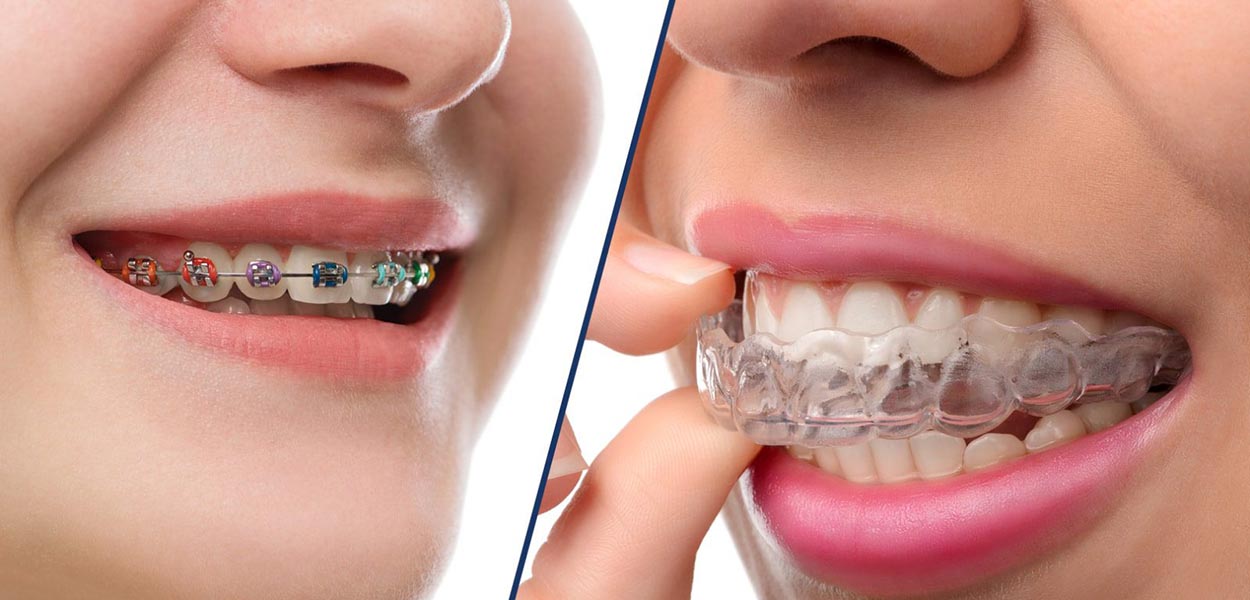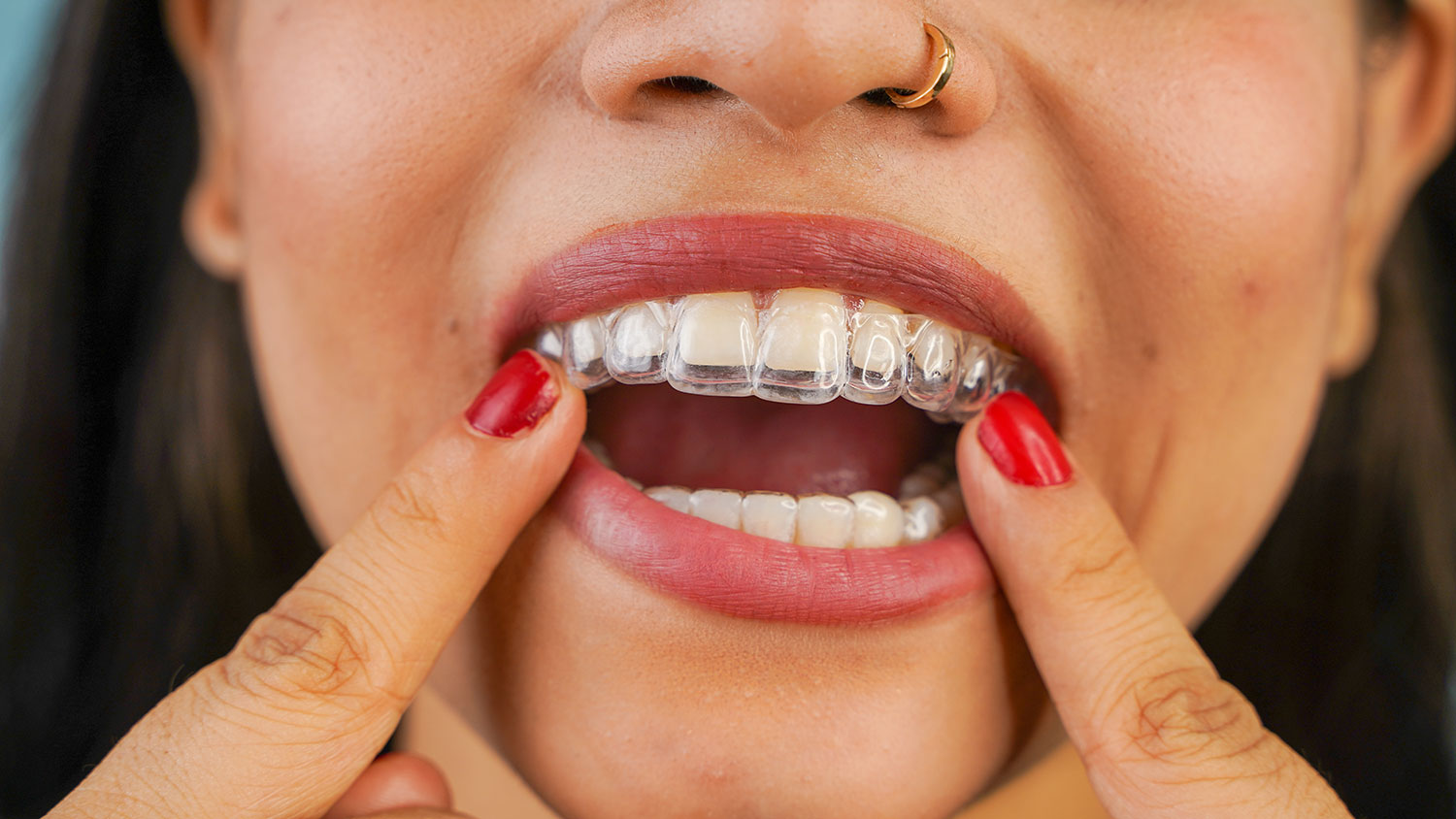How Invisalign Functions: Your Guide to Clear Aligners and Their Effectiveness
How Invisalign Functions: Your Guide to Clear Aligners and Their Effectiveness
Blog Article
Invisalign vs. Conventional Dental braces: Which Option Is Right for You?
When considering orthodontic treatment, the choice between Invisalign and conventional dental braces provides several crucial aspects that warrant cautious assessment. Invisalign supplies a discreet choice with removable aligners, while conventional braces supply an extra noticeable yet effective solution for serious misalignment. Each alternative incorporates distinctive benefits and downsides associated to aesthetic appeals, comfort, therapy period, and cost. Understanding these nuances is vital for making an educated choice that straightens with your individual preferences and way of life. The concern remains: which option will best meet your orthodontic needs and expectations?
Introduction of Treatment Alternatives

In comparison, typical braces include steel brackets and cables that are bound to the teeth. This method uses continual pressure with time to accomplish positioning. While effective for complex orthodontic concerns, conventional dental braces require regular brows through for modifications and can posture obstacles in keeping dental hygiene because of the difficulty of cleaning up about braces and cables.
Both options have their benefits, and the option typically pivots on specific dental conditions, lifestyle preferences, and patient conformity. Inevitably, consulting an orthodontic professional is essential for figuring out one of the most appropriate treatment plan tailored to individual needs. Recognizing the nuances of each option can considerably influence the overall success of orthodontic treatment.
Visual Factors To Consider
A considerable factor influencing the choice in between Invisalign and conventional dental braces is the aesthetic allure each therapy supplies. Invisalign aligners are crafted from clear plastic, making them practically invisible when used.
In contrast, standard dental braces include steel braces and cables, which can be extra obvious. While advancements in orthodontic technology have actually resulted in the growth of smaller braces and colored elastics, traditional dental braces still maintain an even more conspicuous profile. For some individuals, the presence of braces may prevent them from seeking necessary therapy.
Inevitably, the option between Invisalign and traditional braces might depend upon individual preferences relating to aesthetic appeals. Patients who prioritize discretion commonly lean towards Invisalign, while those that are less concerned regarding exposure might choose typical dental braces. Understanding the aesthetic ramifications of each choice is vital for making an educated choice that straightens with one's way of living and choices.
Convenience and Convenience

In terms of benefit, Invisalign aligners are removable, go now allowing individuals to appreciate their preferred foods without restriction and maintain optimal oral health. Cleaning and flossing are streamlined, as the aligners can be secured during these routines, whereas traditional braces call for mindful steering around braces and cords.
Furthermore, Invisalign's modern system allows for fewer orthodontic visits. Clients typically receive multiple collections of aligners simultaneously, which can enhance the treatment procedure and reduce time invested in the orthodontist's chair. On the other hand, conventional braces demand normal modifications, making them much less practical for those blog with busy timetables. Invisalign. On the whole, the comfort and benefit of Invisalign make it an enticing selection for several individuals seeking orthodontic therapy.
Therapy Duration and Performance
While both Invisalign and standard braces work in correcting dental imbalances, the duration of therapy can differ substantially in between the two alternatives. Normally, Invisalign treatment can take anywhere from 12 to 18 months, relying on the complexity of the situation. The clear aligners function by progressively shifting teeth into their wanted positions, and routine follow-ups with an orthodontist assistance make certain progress stays on course.
On the other hand, conventional dental braces usually require a longer commitment, usually varying from 18 months to three years. This is because of their set nature and the usage of cables and braces, which can be extra reliable for complicated instances and extreme imbalances (Invisalign). The therapy effectiveness of traditional braces is well-documented, as they permit precise modifications and greater control over tooth activity
Eventually, the choice between Invisalign and traditional dental braces might depend upon both the awaited therapy duration and the certain dental issues at hand. Consulting with an orthodontist is critical, as they can provide tailored referrals based upon specific demands, making sure the picked method aligns with preferred durations and results.
Price Comparison and Insurance Coverage Options
Expense plays a significant role in the decision-making process for people thinking about orthodontic therapy, whether opting for Invisalign or typical dental braces. Generally, the cost of Invisalign arrays from $3,000 to $8,000, while standard braces generally cost in between $2,000 and $6,000. Elements influencing these costs consist of the intricacy of the situation, the duration of treatment, and geographical area.
Numerous oral insurance coverage strategies supply partial protection for orthodontic treatments, but the specifics can differ extensively. Normally, standard braces might be much more frequently covered by insurance strategies compared to Invisalign, which some insurance companies categorize as an aesthetic treatment.
Additionally, several orthodontic techniques provide flexible settlement strategies, making both treatment alternatives extra obtainable. Clients need to inquire regarding possible financing alternatives and discounts for in advance payments. Evaluating the total cost, including insurance coverage advantages and payment plans, is important for making an informed choice that lines up with both aesthetic preferences and budget factors to consider.

Final Thought
In recap, the selection between Invisalign and conventional braces hinges on several aspects, consisting of aesthetic choices, convenience, therapy duration, and expense. Invisalign provides a discreet, detachable alternative that facilitates dental health and nutritional versatility, while conventional braces may be Source preferable for intricate oral concerns and usually come with a reduced rate factor. Eventually, appointment with an orthodontist is crucial to analyze specific conditions and determine the most ideal therapy choice for achieving optimal oral placement.
When taking into consideration orthodontic treatment, the choice between Invisalign and conventional dental braces presents numerous crucial aspects that merit cautious assessment.Contrasting Invisalign and traditional dental braces discloses unique therapy options for orthodontic improvement.While both Invisalign and typical dental braces are effective in remedying dental imbalances, the duration of treatment can differ dramatically between the 2 options.Price plays a significant duty in the decision-making process for people considering orthodontic treatment, whether deciding for Invisalign or traditional dental braces.In summary, the choice between Invisalign and typical dental braces hinges on multiple variables, including aesthetic choices, comfort, therapy period, and cost.
Report this page